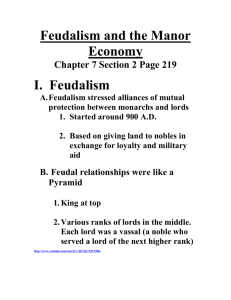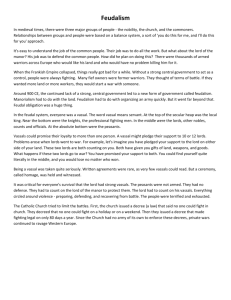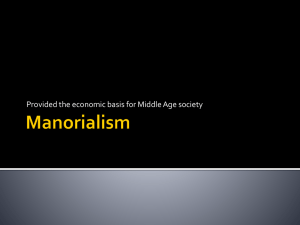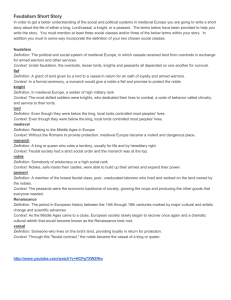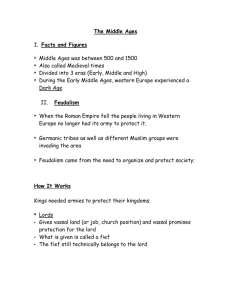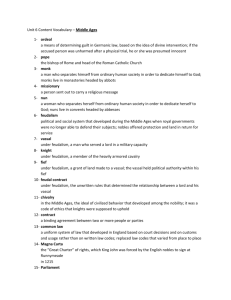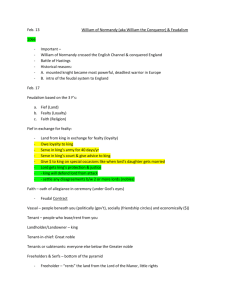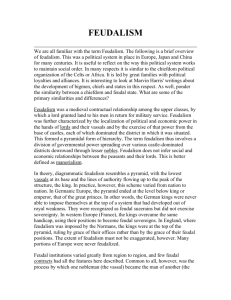LIFE IN A FEUDAL SOCIETY
advertisement
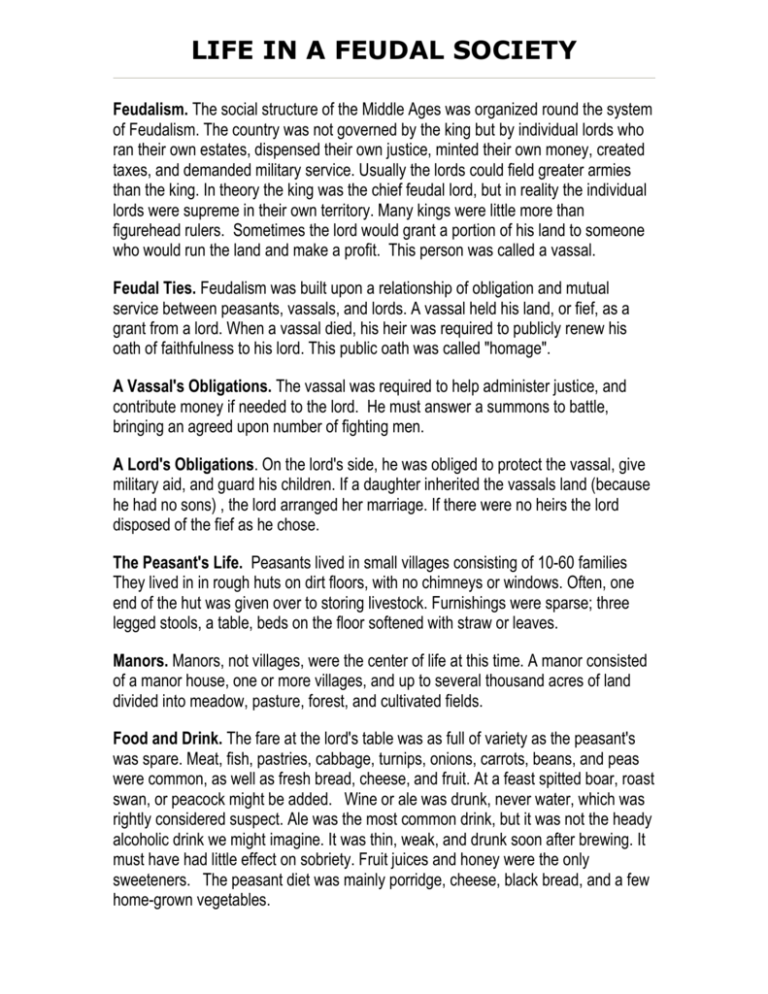
LIFE IN A FEUDAL SOCIETY Feudalism. The social structure of the Middle Ages was organized round the system of Feudalism. The country was not governed by the king but by individual lords who ran their own estates, dispensed their own justice, minted their own money, created taxes, and demanded military service. Usually the lords could field greater armies than the king. In theory the king was the chief feudal lord, but in reality the individual lords were supreme in their own territory. Many kings were little more than figurehead rulers. Sometimes the lord would grant a portion of his land to someone who would run the land and make a profit. This person was called a vassal. Feudal Ties. Feudalism was built upon a relationship of obligation and mutual service between peasants, vassals, and lords. A vassal held his land, or fief, as a grant from a lord. When a vassal died, his heir was required to publicly renew his oath of faithfulness to his lord. This public oath was called "homage". A Vassal's Obligations. The vassal was required to help administer justice, and contribute money if needed to the lord. He must answer a summons to battle, bringing an agreed upon number of fighting men. A Lord's Obligations. On the lord's side, he was obliged to protect the vassal, give military aid, and guard his children. If a daughter inherited the vassals land (because he had no sons) , the lord arranged her marriage. If there were no heirs the lord disposed of the fief as he chose. The Peasant's Life. Peasants lived in small villages consisting of 10-60 families They lived in in rough huts on dirt floors, with no chimneys or windows. Often, one end of the hut was given over to storing livestock. Furnishings were sparse; three legged stools, a table, beds on the floor softened with straw or leaves. Manors. Manors, not villages, were the center of life at this time. A manor consisted of a manor house, one or more villages, and up to several thousand acres of land divided into meadow, pasture, forest, and cultivated fields. Food and Drink. The fare at the lord's table was as full of variety as the peasant's was spare. Meat, fish, pastries, cabbage, turnips, onions, carrots, beans, and peas were common, as well as fresh bread, cheese, and fruit. At a feast spitted boar, roast swan, or peacock might be added. Wine or ale was drunk, never water, which was rightly considered suspect. Ale was the most common drink, but it was not the heady alcoholic drink we might imagine. It was thin, weak, and drunk soon after brewing. It must have had little effect on sobriety. Fruit juices and honey were the only sweeteners. The peasant diet was mainly porridge, cheese, black bread, and a few home-grown vegetables. Table Manners. Meat was cut with daggers and all eating was done with the fingers from trenchers, or hollowed out husks of bread. One trencher was used by two people, and one drinking cup. Scraps were thrown on the floor for the dogs to finish. There were no chimneys, and the fireplace was in the middle of the hall. Smoke escaped by the way of louvres in the roof (at least in theory). Marriage For noble classes arranged marriages would be decided when the future bride and groom were very young, often when they were 10 or 11 years old. The wedding day, held 5 to 6 years later would be their first meeting. Love was rarely and issue as marriage meant sharing a lord's property or a noble name. The most important goal of marriage between nobles was continued success and the acquisition of wealth. Minstrels, jugglers and other entertainers would add to the wedding day's celebration with. The manor's inhabitants would attend along with other nobles and the families' distant relatives. The castle lord might mark the occasion by freeing prisoners, and after the feast beggars would gather at the gates to receive leftover food. Just as with the higher classes, marriage among the poor were also matters of business. Arranged marriages were common, but many weddings among lower classes were often the result of pregnancy. Betrothal ceremonies would take place at the house of the bride and the village would gather to celebrate the day, and perhaps give the couple gifts of wooden utensils or other tools. After "robbing" local village men of a possible wife, tradition dictated that grooms would buy a round of drinks for the denied suitors.
